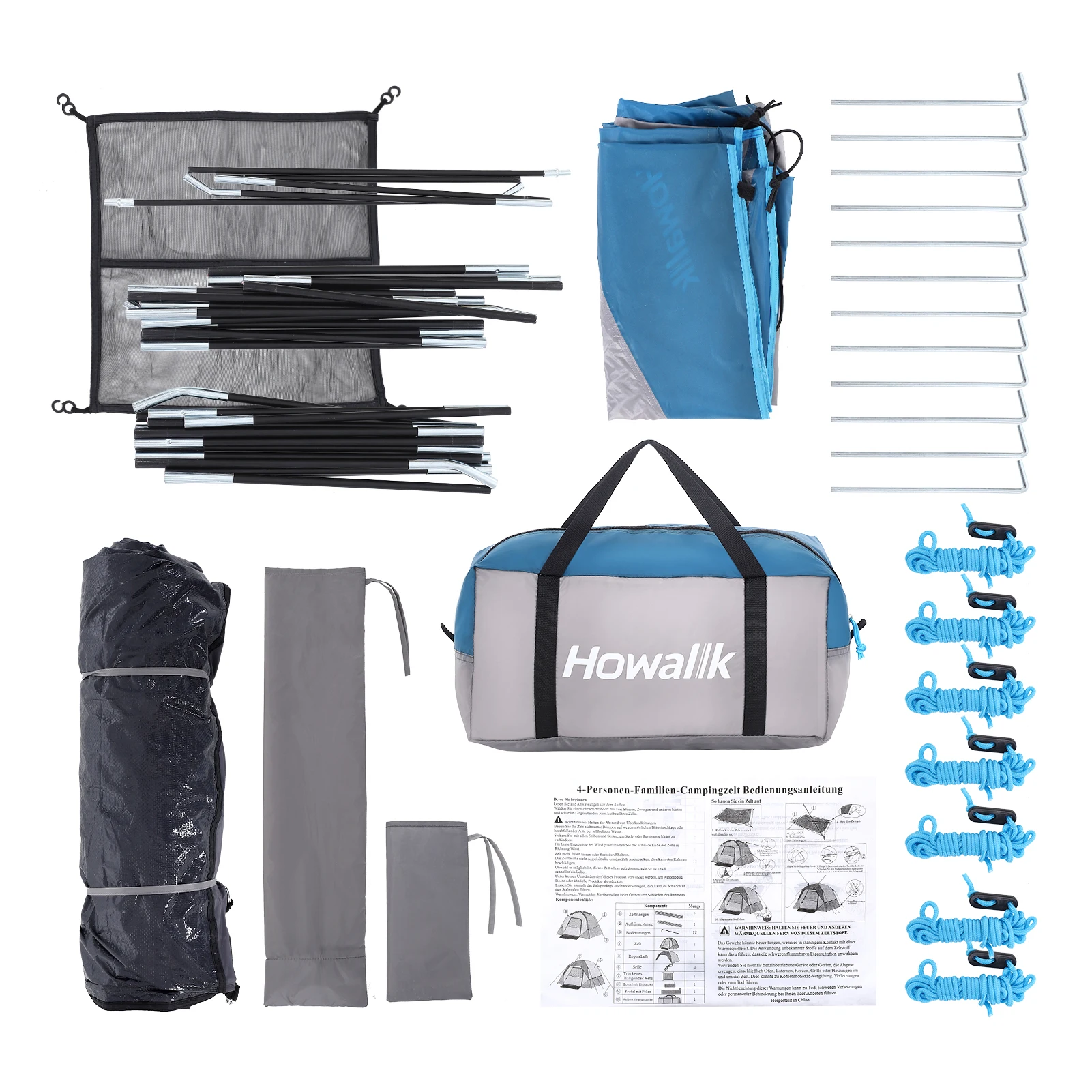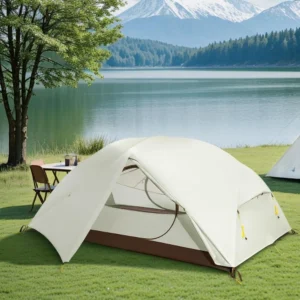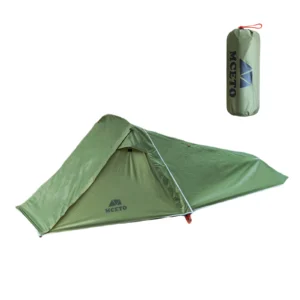Understanding Freestanding Tents and Wind Interaction
When venturing into the outdoors, your tent becomes your home away from home—your primary shelter against the elements. Freestanding tents are popular among campers and backpackers for good reason, but there’s often confusion about what “freestanding” actually means and how these tents handle windy conditions.
A freestanding tent is designed with a self-supporting pole structure that allows the tent to maintain its shape without stakes. However, this doesn’t mean these tents don’t need anchoring—this is perhaps the most dangerous misconception in outdoor shelters. Think of it this way: a freestanding tent can stand up on its own, but it won’t necessarily stay put when the wind picks up.
Wind affects tents through several physical forces:
- Lift: Similar to how airplane wings generate lift, wind flowing over your tent creates pressure differences that can literally lift your shelter off the ground
- Drag: The pushing force of wind against tent surfaces
- Pressure points: Areas where wind force concentrates, potentially causing pole flexing or fabric stress
Every tent, regardless of its design, has a wind threshold—the point at which its stability becomes compromised. Understanding these principles is essential for anyone who might face challenging weather conditions during their outdoor adventures.
The basic freestanding shelters for hikers provide excellent mobility, but knowing how their freestanding tent structure interacts with environmental forces is crucial for safe camping experiences.
The Freestanding Advantage and Limitations
Freestanding tents offer distinct advantages that make them popular choices for many outdoor enthusiasts:
- Easy setup on various surfaces, including rocky terrain
- Ability to pick up and move the tent after setup to find the optimal spot
- Simple setup process that typically requires fewer stakes initially
However, it’s vital to understand what “freestanding” actually means—and what it doesn’t. The term only indicates that the tent can maintain its basic shape without stakes; it doesn’t mean the tent is designed to withstand wind without proper anchoring. In fact, all tents—freestanding or not—require proper staking and guying in windy conditions.
The rigid structure of many freestanding designs does offer an advantage in moderate wind. Their pole-supported architecture often includes crossing poles that create a more stable frame compared to some non-freestanding alternatives. However, this advantage quickly disappears without proper anchoring.
When comparing freestanding vs. staked hiking shelters, each has specific scenarios where they excel, but neither can safely ignore the fundamental need for secure anchoring when facing wind.
Critical Design Elements for Wind Stability
The architecture of your freestanding tent significantly influences how it will perform in windy conditions. Not all freestanding tents are created equal when it comes to wind resistance, and understanding the key design elements can help you select—and properly use—a tent that will keep you safe and comfortable.
Pole Structure and Configuration
The pole system is arguably the most critical component determining wind stability:
- Number of poles: More poles generally means better stability, especially when they create triangulated structures
- Pole crossings: Each intersection creates a stronger framework; geodesic designs with multiple crossing points excel in wind
- Material quality: Premium aluminum poles (like DAC) offer superior strength-to-weight ratio compared to fiberglass
- Diameter and wall thickness: Thicker poles resist bending forces better but add weight
- Sleeve vs. clip attachment: Sleeve attachments distribute force more evenly but are harder to set up; clip systems concentrate stress at clip points
Geodesic and semi-geodesic designs, with their multiple pole crossings creating triangulated structures, represent the gold standard for wind resistance. These designs distribute wind forces across the entire tent structure rather than allowing them to concentrate in vulnerable areas.
The dome tent shapes have proven their worth in challenging conditions for decades, with their curved surfaces naturally shedding wind rather than catching it.
Shape and Profile Considerations
A tent’s shape dramatically affects its wind performance:
Dome and geodesic designs excel in windy conditions because they minimize flat surfaces that can catch wind. Their curved shapes help deflect air flow around the tent rather than creating resistance. This principle explains why many expedition tents for extreme conditions use variations of dome designs.
Lower-profile tents present less surface area to the wind, reducing the overall force exerted on the structure. The height-to-width ratio matters significantly—taller, narrower tents generally catch more wind than wider, lower models with the same floor area.
Wall angles play a critical role as well. Steep walls create more resistance than gradually sloped surfaces. This is why many performance-oriented tents feature curved poles that create rounded profiles instead of sharp angles.
Symmetrical designs generally perform better in changing wind directions since they don’t have an obvious “weak side.” Understanding these principles helps explain what makes tent windproof and informs better decisions when selecting or setting up your shelter.
The Anchoring System: Your Critical Defense
No matter how aerodynamic or structurally sound your tent design is, proper anchoring remains your most crucial defense against wind damage. Even the most advanced freestanding tents require thorough staking and guying to achieve their rated wind resistance.
Stakes: Your First Line of Defense
Your stakes form the foundation of your tent’s stability:
- Stake type matters: Basic wire stakes may be sufficient in ideal conditions, but Y-stakes, V-stakes, or snow/sand stakes provide significantly better holding power in challenging terrain
- Stake angle: Insert stakes at approximately 45° angles away from the tent for maximum holding power
- Depth matters: Drive stakes deep enough to reach more stable soil below the surface layer
- Number of stakes: Use every stake point provided by the manufacturer—they aren’t optional features
Guylines: The Wind Management System
While many campers view guylines as optional accessories, they are absolutely essential in windy conditions. Guylines serve critical functions:
- Creating triangulation: Properly placed guylines create triangular bracing that dramatically increases structural integrity
- Preventing pole flex: Upper guyout points specifically limit the amount poles can bend under wind pressure
- Distributing force: Guylines spread wind loads across multiple anchor points instead of concentrating force on the poles
For optimal performance, use strong, low-stretch materials like Dyneema cord or quality polyester lines. Proper tensioning is crucial—lines should be taut but maintain some minimal flexibility to absorb gusts rather than transferring all force directly to the tent structure.
Our freestanding backpacking tent collection features multiple attachment points designed specifically for comprehensive guying in challenging conditions.
Guylines: The Wind Management System
While stakes anchor your tent to the ground, guylines create the structural support system that manages wind forces. Upper guyout points are particularly crucial as they prevent excessive pole flexing—often the precursor to catastrophic pole failure.
Effective guylines create triangulation, a principle of structural engineering where triangular shapes resist deformation better than squares or rectangles. When properly deployed, your guylines transform your tent from a relatively flexible structure into a much more rigid one.
Material selection matters significantly for guylines:
- Dyneema/Spectra: Extremely strong with minimal stretch, ideal for maintaining tension
- Polyester: Offers good strength with moderate stretch and water resistance
- Nylon: More elastic, which can help absorb gusts but requires more frequent retensioning
Proper tensioning involves finding the sweet spot between too loose (ineffective) and too tight (placing excessive stress on attachment points). Your guylines should be taut enough to prevent significant movement but with just enough give to absorb sudden gusts without snapping or tearing attachment points.
Always use all available guyout points in windy conditions—they were designed into your tent for a reason. Even attachment points that seem redundant in calm weather become essential when the wind picks up.
Strategic Pitching for Maximum Stability
Proper technique can dramatically improve your tent’s wind resistance, sometimes making the difference between a comfortable night and a damaged shelter. The process begins before you even remove your tent from its stuff sack.
Site Selection and Preparation
Your choice of campsite is your first and perhaps most important decision affecting wind stability:
- Seek natural windbreaks: Position your tent behind terrain features, rock formations, or dense (but safe) vegetation that can buffer wind
- Avoid exposed ridgelines and peaks: These areas experience significantly stronger winds than protected valley locations
- Consider wind direction: Anticipate both current and potential overnight wind patterns
- Look for sturdy anchoring ground: Rocky or sandy soils provide less secure anchoring than compact soil
- Beware of hazards: Stay clear of dead trees or branches that could fall in high winds
The ideal site offers protection from prevailing winds while providing solid anchoring opportunities. Be particularly cautious about camping in drainage areas that can channel and intensify wind. Setting up freestanding tents on rocky terrain presents special challenges that require specific techniques for stability.
Pitch With the Wind in Mind
Once you’ve selected your site, follow these steps for a wind-resistant setup:
- Orient strategically: Position the lowest, most aerodynamic end of your tent into the prevailing wind
- Stake immediately: Secure the tent to the ground before inserting poles to prevent it from blowing away during setup
- Install poles methodically: In very windy conditions, keep the tent low to the ground while inserting poles
- Tension evenly: Create balanced tension across the tent body to prevent stress concentrations
- Deploy guylines systematically: Start with the windward side, working in pairs on opposite sides
- Double-check all connections: Verify that pole connections, stake placements, and guyline tensions are secure
Remember that proper orientation can significantly reduce wind resistance. Many tents have a more aerodynamic end specifically designed to face the wind—typically the end with a lower profile or more robust pole structure.
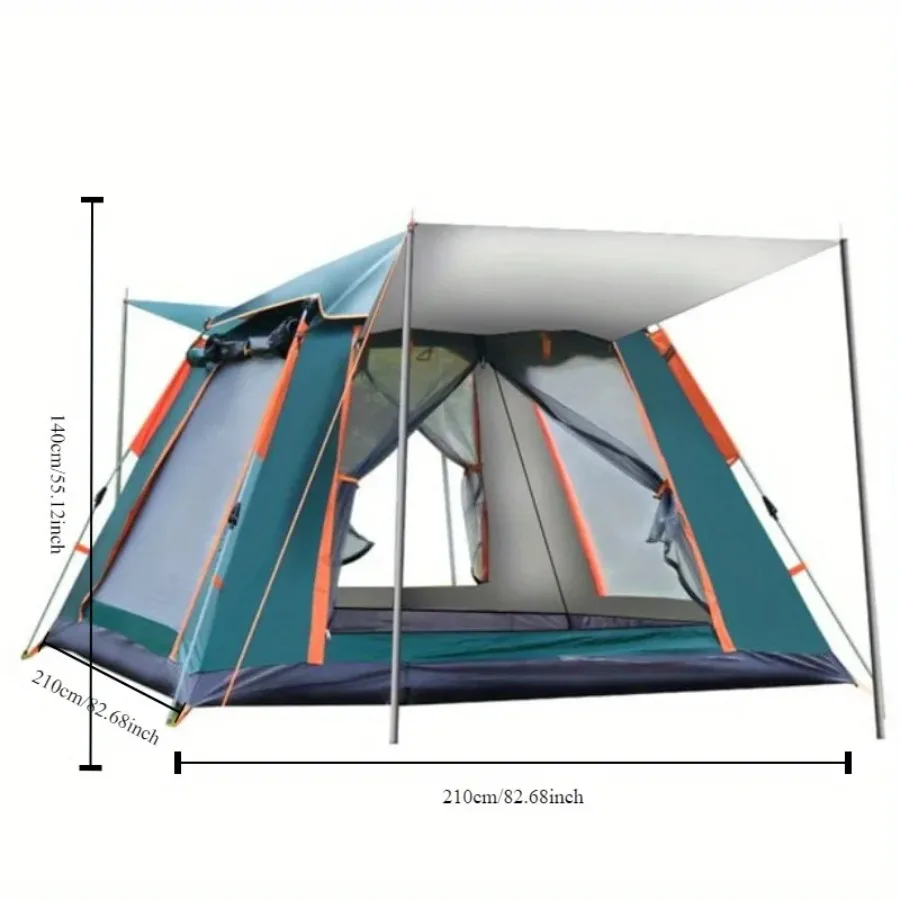
For environments with challenging weather, our heavy-duty 4-season tent collection provides enhanced stability features designed specifically for extreme conditions.
Advanced Techniques for Extreme Conditions
When conditions deteriorate beyond normal parameters, standard setup procedures may not be sufficient. These advanced techniques can help “bombproof” your shelter in extreme conditions:
- Double staking: Use two stakes in a V-configuration at critical anchor points
- Rock reinforcement: Place large rocks over stake heads or directly on top of stake loops when ground anchoring is difficult
- Cross-guying: Add diagonal guylines that create X-patterns for additional triangulation
- Internal guylines: In extreme conditions, run supplementary lines from internal attachment points to opposite stake points
- Strategic gear placement: Position heavy gear along the tent perimeter to add ground force and reduce lifting
These techniques significantly increase your tent’s ability to withstand strong, sustained winds. The internal guyline technique is particularly effective for preventing pole flexing in extreme conditions, though it does reduce your usable interior space.
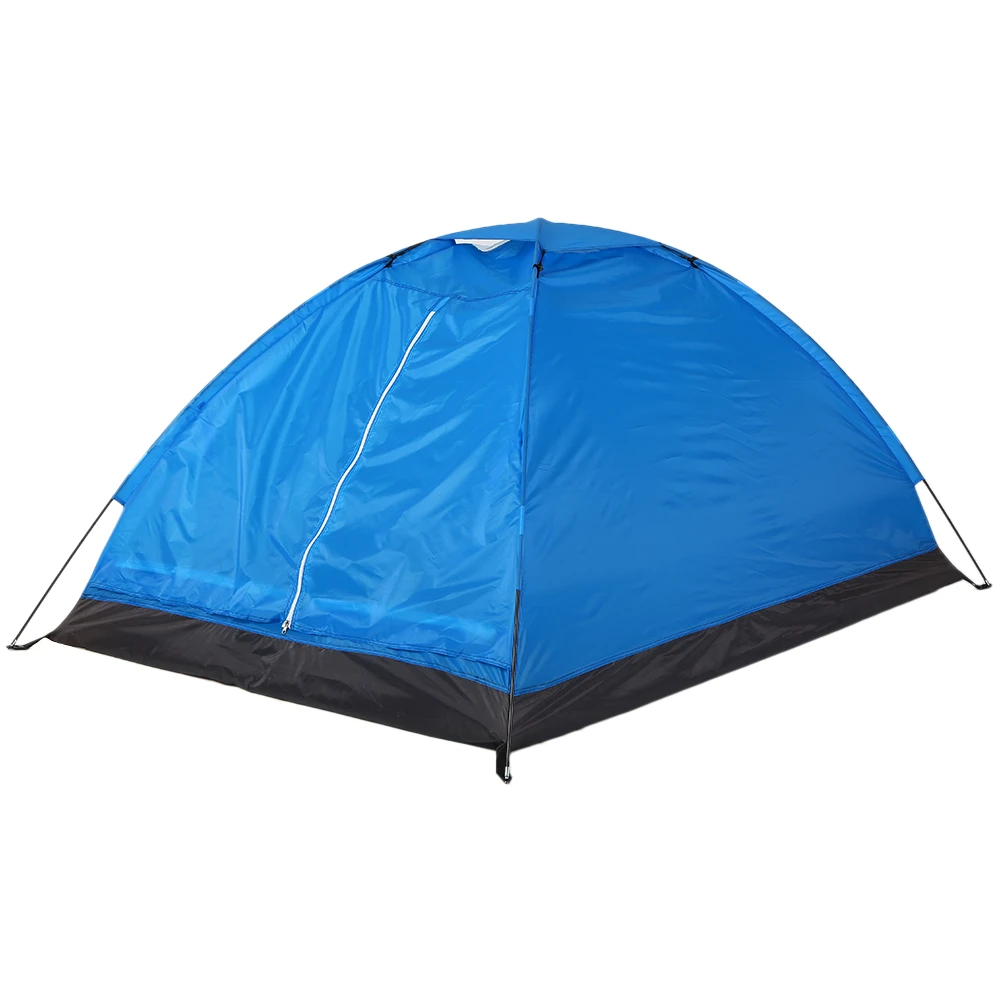
For more specialized information on how to prepare for extreme conditions, our guide on understanding wind resistance in alpine tents provides detailed techniques developed by mountain expeditions.
Emergency Measures and Adaptations
Sometimes conditions exceed what your equipment was designed to handle. When standard methods prove insufficient, these emergency techniques may help:
- Create snow walls or rock barriers: Build windbreaks using natural materials
- Improvise anchors: Use “deadman” anchors (buried objects with attached lines) when standard stakes won’t hold
- Reduce tent height: Remove portions of pole sections to lower your tent’s profile
- Reinforce vulnerable areas: Use repair tape to temporarily strengthen stress points
- Consider relocation: Know when it’s time to move to more protected terrain
In problematic terrain like sand, snow, or solid rock, specialized anchoring techniques become essential:
- Sand: Use sand/snow stakes or fill stuff sacks with sand and bury them as anchors
- Snow: Create snow stakes by filling and freezing bags of snow or burying crossed ski poles
- Rock: Use rock cords wrapped around secure boulders instead of traditional stakes
Our winter camping tent collection includes features specifically designed for secure anchoring in challenging winter conditions.
Choosing a Wind-Worthy Freestanding Tent
If you frequently camp in windy areas, selecting the right tent from the beginning can save you significant stress and potential equipment damage.
Key Specifications to Consider
When evaluating tents for wind performance, pay special attention to:
- Season rating: True 4-season tents offer superior wind stability compared to 3-season models
- Pole structure: Look for designs with multiple crossing points and additional support poles
- Guyout points: More attachment points, especially along upper sections, indicate better wind management potential
- Pole material and diameter: Premium aluminum poles with larger diameters provide better stability
- Wind tunnel testing: Some manufacturers provide specific wind resistance ratings based on controlled testing
Understanding these specifications helps cut through marketing claims to identify truly wind-resistant designs. While “4-season” designation generally indicates better wind performance, verify the specific pole configuration and guyline system rather than relying solely on this label.
The design features of freestanding hiking tents vary significantly between manufacturers and models, making it important to evaluate specific structural elements rather than general marketing claims.
Essential Features for Wind Performance
When selecting a tent for windy conditions, prioritize these specific features:
- Geodesic or semi-geodesic pole structure: These designs create multiple triangulated sections that dramatically improve stability
- Low-profile design: Lower height reduces the surface area exposed to wind
- Multiple guy points: Look for at least 6-8 reinforced attachment points, including upper pole attachments
- Reinforced stake loops: Heavy-duty webbing or cord loops resist tearing under stress
- Quality fabric with appropriate stretch: Some minimal stretch helps absorb gusts without transferring all force to the poles
- Ventilation systems with storm flaps: Ensure vents can remain functional during high winds without creating entry points for moisture
Remember that there’s generally a trade-off between ultimate stability and weight—the most wind-resistant designs typically weigh more than their lightweight counterparts. However, our ultralight freestanding tent collection demonstrates that modern materials can provide excellent wind resistance while maintaining reasonable pack weight.
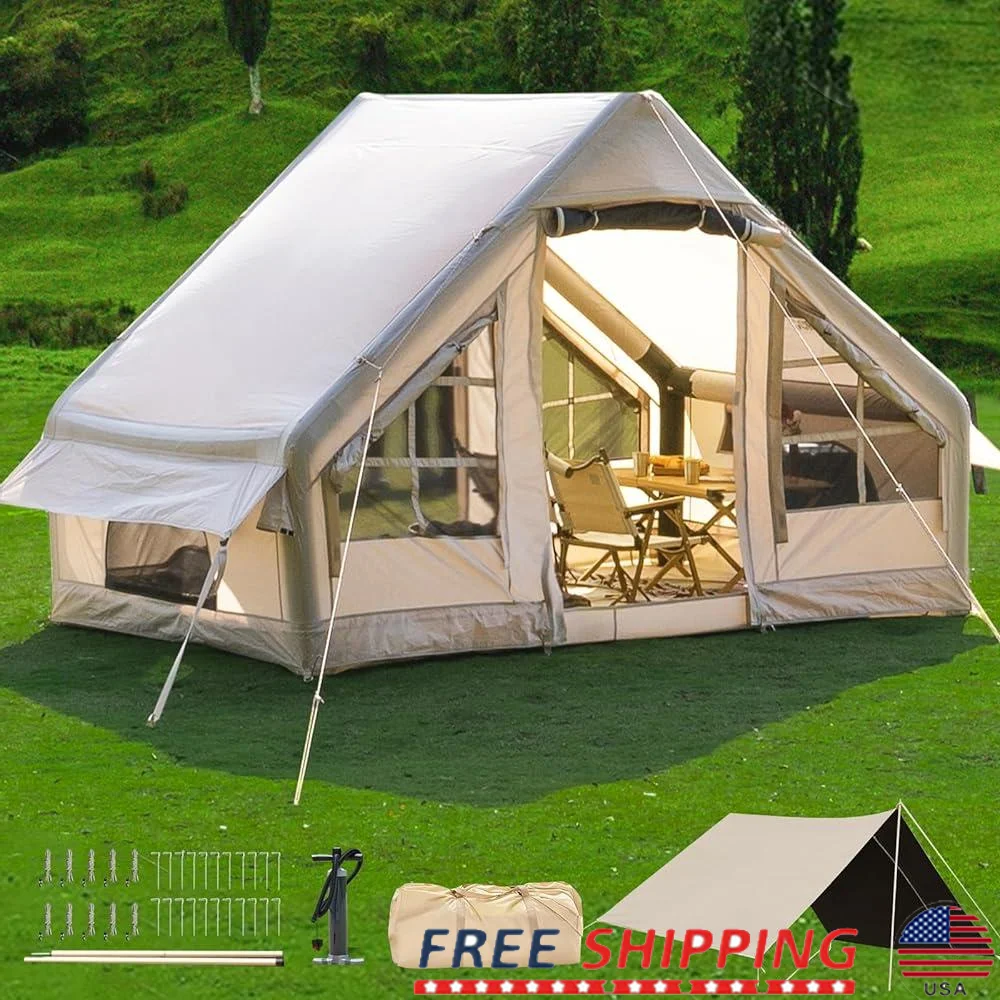
Lightweight Backpacking Tent, Ultralight Backpacking Tent, Waterproof Backpacking Tent
$391.05 Select options This product has multiple variants. The options may be chosen on the product pageHeavy Duty 4 Season Tent, Mountaineering Tent, Winter Camping Tent
$870.40 Select options This product has multiple variants. The options may be chosen on the product pageUltralight Backpacking Tent, Ultralight Dome Tent, Winter Camping Tent
Price range: $369.63 through $370.07 Select options This product has multiple variants. The options may be chosen on the product pageHeavy Duty 4 Season Tent, Ultralight Freestanding Tent, Winter Camping Tent
$3,722.66 Select options This product has multiple variants. The options may be chosen on the product pageBackpacking Tent with Vestibule, Freestanding Backpacking Tent, Lightweight Backpacking Tent
Price range: $446.89 through $447.22 Select options This product has multiple variants. The options may be chosen on the product pageHeavy Duty 4 Season Tent, Winter Camping Tent
$638.69 Select options This product has multiple variants. The options may be chosen on the product page
Common Mistakes That Compromise Stability
Even the best equipment can fail if not properly used. These common errors significantly reduce your tent’s wind resistance:
- Insufficient staking: Using only the minimum stakes needed for basic setup
- Ignoring guylines: Failing to deploy guylines in moderate winds because they seem “unnecessary”
- Improper tensioning: Creating uneven tension that allows parts of the tent to flap and catch wind
- Poor site selection: Choosing exposed locations without natural wind protection
- Incorrect orientation: Positioning the tent’s largest flat surface toward the wind
- Delayed maintenance: Using damaged poles or worn guylines that compromise the tent’s structural integrity
Each of these mistakes compromises your tent’s designed wind resistance capacity. Perhaps the most dangerous is the false sense of security that comes from previous successful experiences—many campers have used their tents multiple times in calm conditions, then found themselves unprepared when significant winds arise.
Regular maintenance checks help ensure your tent performs at its best when you need it most. Inspect poles for hairline cracks, check guylines for fraying, and verify that all tension adjusters work smoothly before heading out.
Is Your Tent Really Ready for Wind? (A Checklist)
Before facing windy conditions, verify your preparation with this quick assessment:
Pre-Trip Checks:
– [ ] All poles are intact without cracks or splinters
– [ ] Guylines are in good condition without fraying
– [ ] Adequate number of appropriate stakes for expected conditions
– [ ] Tent body and fly have no tears or damaged seams
– [ ] All tensioners and clips function properly
Setup Verification:
– [ ] Every stake point is securely anchored
– [ ] Tent is properly oriented relative to wind direction
– [ ] All guylines are deployed and properly tensioned
– [ ] Rainfly is evenly tensioned without flapping areas
– [ ] Upper guyout points are utilized, especially on the windward side
Ongoing Monitoring:
– [ ] Check stake and guyline tension after temperature changes
– [ ] Listen for flapping fabric that indicates tension issues
– [ ] Watch for excessive pole flexing that may indicate impending failure
– [ ] Verify stakes remain securely placed, especially after rain
Our waterproof backpacking tent collection includes models designed to maintain their integrity and waterproofing even in challenging windy conditions with driving rain.
Can Any Freestanding Tent Handle Strong Winds?
Not all freestanding tents are created equal when it comes to wind resistance. While proper setup dramatically improves performance, there are real differences in the inherent stability of various designs.
Q: What wind speeds can a typical freestanding tent handle?
A: Most 3-season recreational tents are designed to handle sustained winds of 20-30 mph when properly guyed. True 4-season mountaineering tents may withstand 50+ mph winds. However, these are general guidelines—gusting winds create more stress than steady winds of the same average speed.
Q: Do manufacturer wind ratings mean anything?
A: Yes, but with caveats. Some premium manufacturers conduct actual wind tunnel testing, while others provide estimates. Either way, these ratings typically assume perfect setup with all guylines deployed—something many users don’t achieve in practice.
Q: Can budget tents be made wind-resistant?
A: To a point. Proper setup techniques significantly improve any tent’s performance. However, fundamental design limitations and material quality differences mean budget tents generally have lower ultimate wind resistance than premium options specifically designed for challenging conditions.
When to Choose Alternative Shelter Options
While freestanding tents offer many advantages, they aren’t always the optimal choice for extremely windy conditions:
- Tunnel tents often provide better aerodynamic profiles and can excel in steady, directional winds when properly oriented
- Low-profile shelters like bivy sacks present minimal surface area to the wind but sacrifice interior space
- Pyramid shelters offer excellent strength-to-weight ratios but typically require center poles and more complex setup
For extended trips in consistently windy areas (like exposed coastlines or alpine regions), these specialized designs might offer advantages over traditional freestanding tents. The key is matching your shelter type to the expected conditions and your personal priorities regarding comfort versus absolute stability.
In particularly extreme environments, consider whether a freestanding geodesic design might actually offer the best overall protection despite not being the most aerodynamic option, as its self-supporting structure provides critical stability during setup in challenging conditions.
Understanding these principles helps ensure that wherever your adventures take you, your shelter remains secure—allowing you to focus on enjoying the experience rather than worrying about your tent.

